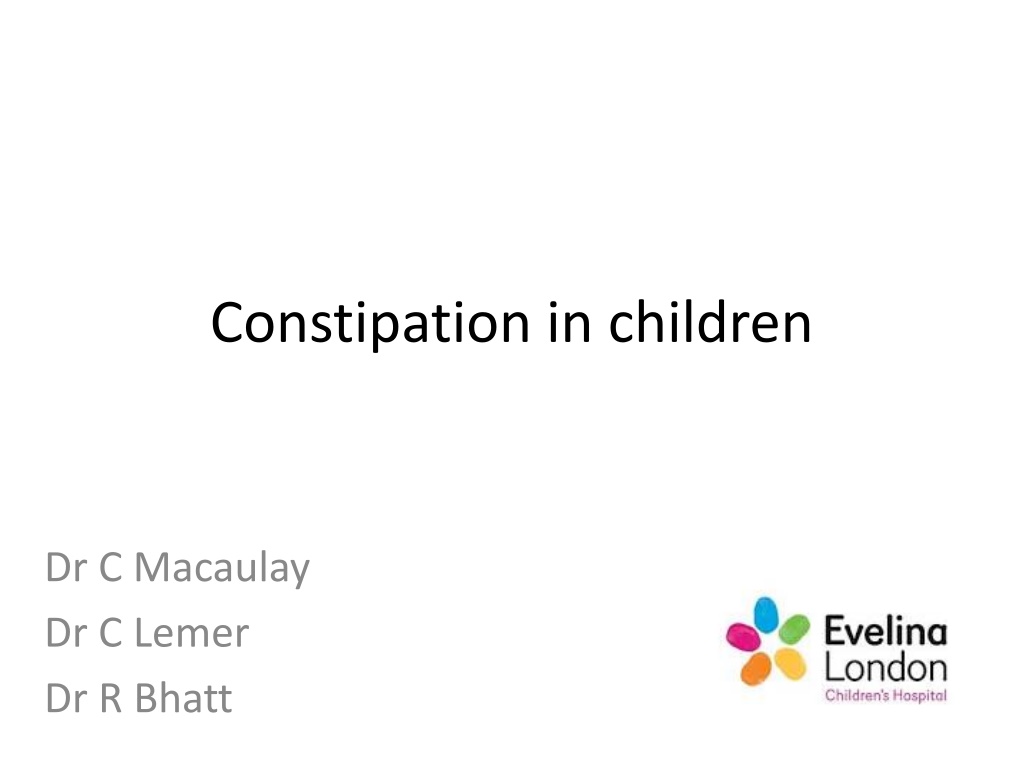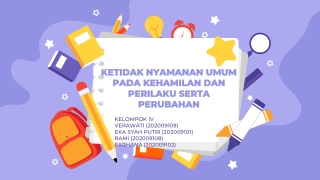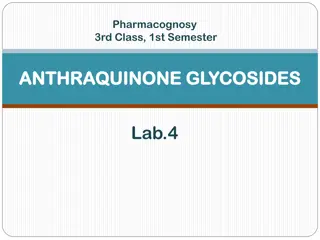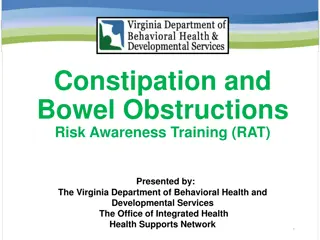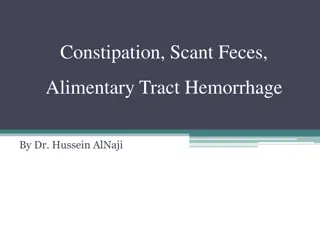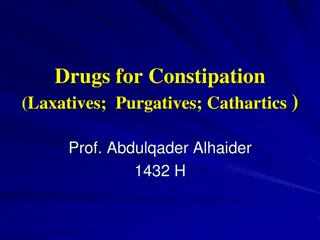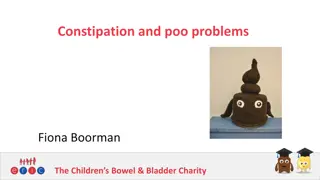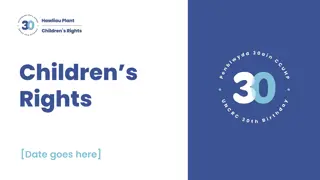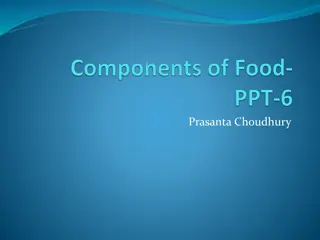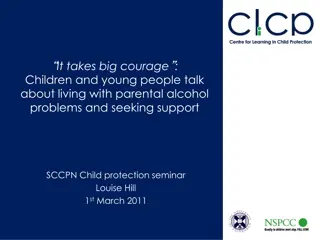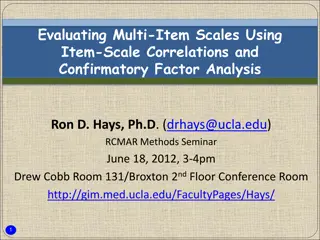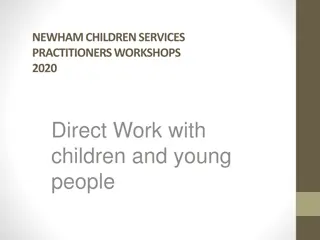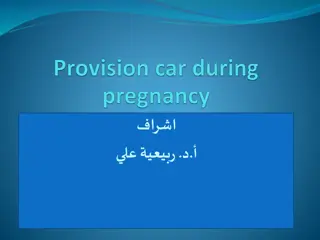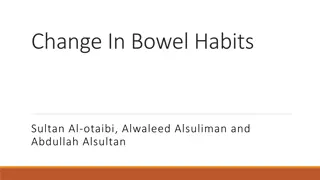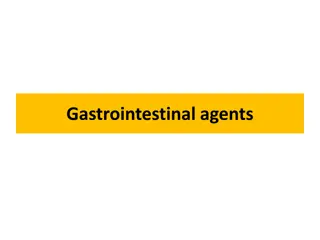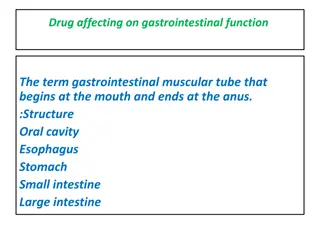Understanding and Managing Constipation in Children
Constipation is a common issue affecting 5-30% of children, with various causes and potential complications. Early diagnosis, treatment, and monitoring are essential to prevent further problems. Red flags, history taking, examination, and management strategies such as maintenance therapy and disimpaction therapy are key aspects in addressing constipation in children.
Download Presentation

Please find below an Image/Link to download the presentation.
The content on the website is provided AS IS for your information and personal use only. It may not be sold, licensed, or shared on other websites without obtaining consent from the author. Download presentation by click this link. If you encounter any issues during the download, it is possible that the publisher has removed the file from their server.
E N D
Presentation Transcript
Constipation in children Dr C Macaulay Dr C Lemer Dr R Bhatt
Incidence Common; 5-30% of child population Affects all age groups Can be under diagnosed Common reason for referral to secondary care Can be related to behavioral difficulties Treat early to avoid complications
Red Flags Constipation from birth or first few weeks of life Failure/delay in passing meconium > 48hrs Ribbon stools Weakness in legs/locomotor delay Abdominal distension + /-vomiting Abnormal appearance of anus (do not do a PR) Abnormal examination of spine Abnormal neuromuscular signs or reflexes
History Take a full history and examination including: Frequency and consistency of stool Painful defecation Diet and fluid intake Behaviour including toileting Social history Remember: abdominal pain may be due to constipation and diarrhoea may be overflow
Examination Is there evidence of faecal impaction, with either of the following: Large palpable stool in lower abdomen Soiling associated with faecal overflow
Idiopathic Constipation Reassure child and family Start Maintenance Therapy Start with Movicol < 1 year: -1 sachet daily 1-6yrs: 1 sachet daily 6-12 yrs: 2 sachets daily Re-assess frequently Adjust dose to produce regular soft stool. Max 4 sachets/day as maintenance If there is no effect after 2 weeks add a stimulant laxative If Movicol is not tolerated, substitute with a stimulant laxative +/- Lactulose Review children after 4 weeks
Faecal impaction Start Disimpaction Therapy Start with Movicol < 1 yr: -1 sachet daily 1-5yrs: 2 sachets day 1, increase by 2 sachets/48hrs to max 8 5-12 yrs: 4 sachets day 1, increase by 2 sachets/day to max 12 Review within 1 week If there is no effect after 2 weeks add a stimulant laxative e.g. senna If Movicol not tolerated, substitute with a stimulant laxative +/- Lactulose Warn parents that disimpaction may initially increase the symptoms of soiling and abdominal pain
Top Tips Engage and support parents Are there non-medical factors involved? Check about toileting issues and toilet behaviour. Use reward systems such as star charts to encourage good toileting behaviour Are they withholding because school toilets not clean etc? Are there other emotional issues/difficulties at home? Do they understand the condition? Educate about constipation - Give written information Advice about diet and fluids Let the family know that it is a chronic condition, there is no quick fix, and treatment may be needed for months. Do they know how to make up and take the medication? They can mix with other drinks to make it more palatable e.g. squash
Top Tips Don t under-medicate Do not be afraid to give high doses of medication NICE Guidance gives higher doses that BNFC After disimpaction the starting maintenance dose may be half the disimpaction dose Review regularly Make sure you review regularly is support available from other sources e.g. health visitor/practice nurse? Make sure you are giving a constant message
Key Messages It is common Recognise and treat early Diarrhoea may be overflow due to severe constipation Optimise treatment Need to work and engage parent and child Reassure and keep consistent message
Resources http://www.nice.org.uk/guidance/cg99 http://patient.info/health/constipation-in- children-leaflet http://www.eric.org.uk/
